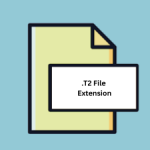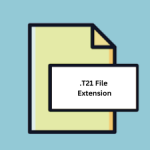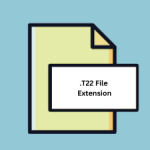.MPR File Extension

FileMaker Dictionary File
| Developer | FileMaker |
| Popularity | |
| Category | Data Files |
| Format | .MPR |
| Cross Platform | Update Soon |
What is an MPR file?
.MPR files, also known as FileMaker Dictionary files, are essential components of FileMaker solutions. They store metadata and definitions related to data elements such as fields, tables, layouts, scripts, and more.
These files essentially act as dictionaries for FileMaker databases, providing a structured reference for developers and users alike.
More Information.
The history of .MPR files traces back to the evolution of FileMaker as a database management system. Initially introduced as a simple flat-file database system in the 1980s, FileMaker steadily evolved into a robust platform capable of handling complex relational databases.
.MPR files were introduced to streamline the management of database elements by providing a standardized format for storing metadata and definitions.
The primary purpose of .MPR files are to serve as comprehensive dictionaries that define the structure and behavior of data within FileMaker solutions.
They enable developers to maintain consistency and integrity across databases by providing a central repository for schema definitions and object properties.
Origin Of This File.
FileMaker, developed by Claris International, has been a prominent platform for creating custom applications and managing databases since its inception.
The .MPR file extension emerged as part of FileMaker’s architecture, facilitating the organization and management of database components within FileMaker solutions.
File Structure Technical Specification.
.MPR files adhere to a specific structure designed to store metadata and definitions in a hierarchical format.
They typically contain sections dedicated to different types of database elements, such as tables, fields, layouts, scripts, and value lists. Within each section, properties and attributes associated with the respective elements are stored in a structured manner.
Technical specifications for .MPR files may vary slightly depending on the version of FileMaker used.
They generally adhere to a standardized format that includes headers, data structures, and markers to delineate different sections within the file.
How to Convert the File?
Converting .MPR files to other formats or vice versa may be necessary in certain scenarios. While direct conversion tools for .MPR files are not widely available, it is possible to export or import database definitions using FileMaker’s built-in functionality.
To convert .MPR files to other formats, follow these steps:
- Open FileMaker Pro: Launch the FileMaker Pro application on your computer. FileMaker Pro is the primary tool for managing FileMaker databases and accessing .MPR files.
- Navigate to the FileMaker Solution: Open the FileMaker solution containing the .MPR file that you wish to convert. Navigate to the relevant section within the FileMaker application where the database definitions are stored (e.g., tables, fields, layouts).
- Export Database Definitions: Use the export feature within FileMaker Pro to save the database definitions in the desired format. FileMaker Pro supports exporting database definitions in formats such as .CSV (Comma-Separated Values), .XML (Extensible Markup Language), and others.
- Choose Export Options: When exporting database definitions, you may be prompted to specify export options such as the delimiter for .CSV files or the XML format version for .XML files. Configure these options according to your preferences and requirements.
- Save the Exported File: Specify a location on your computer where you want to save the exported file. Choose a descriptive filename and select the appropriate file format extension (e.g., .csv, .xml) based on the chosen export format.
- Complete the Export Process: Review the export settings and file location to ensure accuracy. Once satisfied, initiate the export process to convert the .MPR file to the desired format. FileMaker Pro will generate the exported file containing the database definitions in the specified format.
Advantages And Disadvantages.
Advantages:
- Centralized Management: .MPR files provide a centralized repository for storing database definitions, facilitating easier management and maintenance of FileMaker solutions.
- Version Control: Developers can use .MPR files to track changes and revisions to database structures, enabling effective version control.
- Portability: .MPR files can be easily shared and transported between different FileMaker solutions, simplifying the process of deploying databases across multiple environments.
Disadvantages:
- Complexity: Managing .MPR files require a certain level of technical expertise, particularly when dealing with large and complex databases.
- Dependency: Changes made to .MPR files can impact the functionality of associated FileMaker solutions, necessitating careful consideration and testing.
- Compatibility Issues: .MPR files may not always be fully compatible across different versions of FileMaker, potentially leading to compatibility issues when migrating or sharing databases.
How to Open MPR?
Open In Windows
- FileMaker Pro: Install FileMaker Pro on your Windows computer. Double-click the .MPR file to open it in FileMaker Pro.
Open In Linux
- Wine: You can try using Wine, a compatibility layer that allows running Windows applications on Linux. Install Wine, then use it to run FileMaker Pro, and open the .MPR file within the application.
Open In MAC
- FileMaker Pro: If you have a macOS device, simply open FileMaker Pro and then open the .MPR file within the application.
Open In Android
Open In IOS
- FileMaker Go: FileMaker Go is the mobile version of FileMaker Pro available for iOS devices. If you have FileMaker Go installed on your iPhone or iPad, you can transfer the .MPR file to your device and open it within FileMaker Go.













